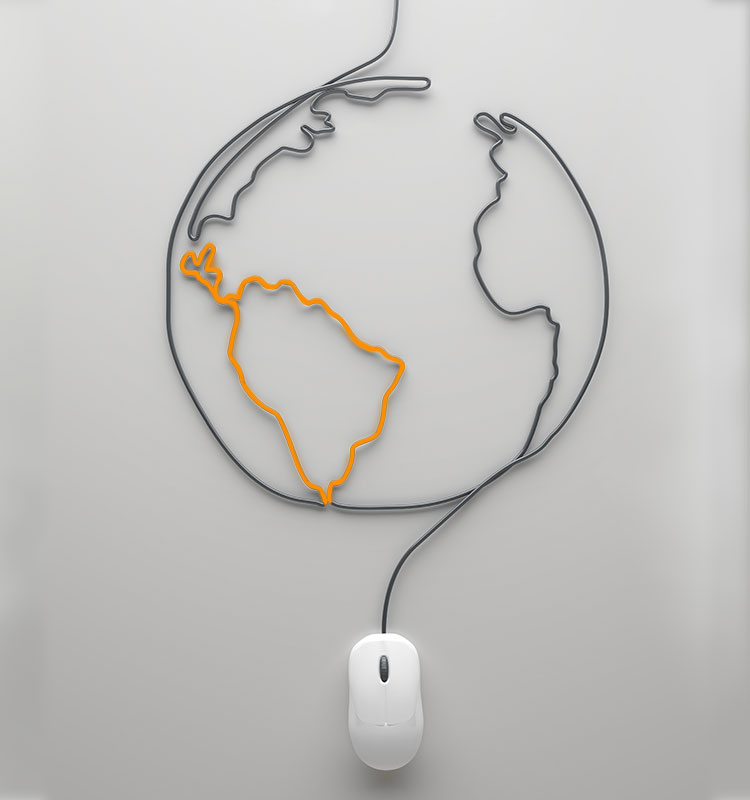
Are you looking for a language service provider for Danish for your commercial endeavours?
oneword’s language experts would be happy to help
oneword is a certified language service provider for Danish and offers excellent translations into and from Danish. So that we can provide you with a free quote, we first check your source text in Danish, German, English or any other language and use it to make a cost calculation. As a language service provider certified to ISO 17100, we have a global network of native-speaker, qualified professional translators at our disposal and use workflows that have been tested by several audits to achieve a satisfactory result for you. For Danish translations, the translators are located in the target country Denmark and are native speakers of Danish. In addition, they specialise in the domain of the particular area of translation. After all, every industry and every subject also has its own terminology.
oneword – Danish language service provider: certified, cost effective and on time
oneword – Danish language service provider: certified, cost effective and on time
Bespoke solutions for companies
Translations for Denmark: the land of hygge
If you think about Danish terms and those that are difficult to translate into German, you cannot get past the small but fine word “hygge”. And there is something very special about it: according to happiness research, Danes are the happiest people in the world. Over recent decades, the nation has been ranked constantly at least in the top three. But what makes people in Denmark so happy? Does it have anything to do with the culture, language, country and people? Definitely! The magic word is “hygge” and there is plenty of it in the Danish culture and language. A little phrase book:
- Hyggeligt at møde dig (“Nice to meet you”)
- Hyg jer! (“Make yourselves at home!”)
- At hygge sig (“do something good for yourself”)
- Alt andet end hyggeligt (to understate and avoid swearing, which is “anything but hyggelig”)
- Åh, hvor hyggeligt (“Oh, how beautiful!”)
Therefore, hygge is the art of creating intimacy, “a feeling of close friendship, serenity and contentment, all combined in one term,” say experts Helen Dyrbye, Steven Harris and Thomas Golzen (1999). It is a social feeling, a part of the Danes’ supportive, equal community concept and an essential part of the way Danes view themselves.
Hygge – a feeling you cannot translate?
Hygge can be translated into German as Gemütlichkeit or Geselligkeit (cosiness or camaraderie). But it is much more than that. Danes also understand hygge to mean being at home, harmony, enjoyment, relaxation or slowing down.
For example, there are hygge clothes, such as large scarves and cosy sweatpants, hygge foods, such as cinnamon buns or hot chocolate, hygge decorations, such as cosy blankets, hygge lamps and furniture, and hygge evenings spent by the fireplace with family or friends, a cup of glögg and a card game. So it is no wonder that the Danes are way ahead of the Germans in consuming sweets:
Danish people eat 8.2 kg of sweets per capita per year. That is almost twice as much as in other European countries.
The hygge lifestyle with open fires and candlelight also comes at a price: On average, Danes consume 6-8 kg of candles per capita per year, while Germans use about 2.6 kg.
Where in the world is Danish spoken?
Danish has been an official EU language since 1973 and is a North Germanic language, a subfamily of the Germanic language. In Denmark, the official language Danish is not laid down in law, but is spoken in all parts of the country. Therefore, Danish is the sole national language of Denmark and is standardised as Rigsdansk (Standard Danish). In Greenland, also Danish, Greenlandic is the first language and the second official language is Danish. It is the same in the Faroe Islands, where Faroese is the main language. Danish is a compulsory subject in Icelandic schools, but it lost its status as the first foreign language to English in the early 1990s. In Southern Schleswig in Germany, between Kiel and Föhr, Danish is an official regional/minority language. Danish is also spoken sporadically in Norway, Sweden, Argentina, Canada and the USA.
A total of around 5.3 million native speakers speak Danish, and 0.3 million second language speakers have a command of the language. This is one explanation for why translations to and from Danish have to be in a higher price bracket than English, Spanish or Chinese: The percentage of expert Danish translators (with appropriate professional experience and domain expertise) is significantly lower than that for translations into English, Spanish or Chinese, for example.
Special features of the Danish language
In Denmark, you are almost always on first name terms with people. However, this should not be seen as disrespectful or insulting. Instead, it comes down to the Danish sense of community – another expression of hygge – which helps the approximately 5.6 million inhabitants of Denmark to really feel at home and hyggelig in their country.
In the Danish language, the letter “x” doesn’t exist, and is replaced by “ks”. In addition, there are three other special characters that are used in contrast to the German alphabet: Æ/æ, Ø/ø, Å/å.
The Æ/æ is a fusion of two letters and easy to recognize: the A and E. Therefore, the pronunciation is obvious: The letter is pronounced like the German Ä (like the e in egg). The Ø/ø, on the other hand, is phonetically equivalent to the German Ö. The A with overring, Å/å, is particularly exciting and has no equivalent in German. It was supposed to replace the double Aa in Danish as part of the 1948 spelling reform. It sounds like a mixture of A and O, though phonetically you can imagine that the longer the syllable, the more this letter tends towards O: For example, Apenrade, a town in Denmark, is spelled Åbenrå and pronounced “Obenro”. Phonetics is therefore completely different from the written word, a completely special feature of the Danish language. This is due to the typical Danish stød and the tendency to swallow many consonants. Thus, the place Odense is pronounced like “O-nsuh”, where there is actually a small pause in speech between O and the rest of the word.
The Danish language has a large number of dialects. Mainly due to the geographical location, there are many different language variants: in West Jutland, Danish is more influenced by English and Swedish; in South Jutland it is more influenced by German, which is unsurprising given where it is. Therefore, many Germans who speak Low German or Dutch are familiar with Danish, at least when it is written, because understanding Danish in its written form is easier than when it is spoken.
You may also be interested in
8 good reasons to choose oneword.
Learn more about what we do and what sets us apart from traditional translation agencies.
We explain 8 good reasons and more to choose oneword for a successful partnership.



